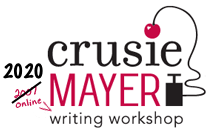Jennifer Crusie's Blog, page 120
July 9, 2020
This is a Good Book Thursday, July 9, 2020
Thus week I’ve been glomming Mhairi MacFarlane, a good change of pace after last week’s Dick Francis. More kissing, less bleeding.
What did you read this week?

July 8, 2020
Working Wednesday, July 8, 2020
This week, I worked on taxes and trying to find my floors. (Note to self: stop throwing things on them.)
What did you work on?

July 6, 2020
Beginnings are Hard
And I’m back. Got a new power cord and everything, except it now appears that the problem was not in the power cord, it was in port in the laptop. Which means the Apple Store and the Genius Bar, which is probably not even open. So if I suddenly disappear this week, it’s not you, it’s my laptop.
Doing HWSWA with Bob has put me firmly back into How-Does-This-Work-Anyway mode, which made me think about the opening of Lily, which is still not a book. But it is a great Petri dish for experimenting with writing theory, so I went back and looked at what I had for an opening now that I have an antagonist (crucial, that).

Lily vs. Dr. Ferris (office)
Lily vs Pangur (apt)
Lily vs Seb (outside diner
Lily vs. Van (diner kitchen)
Lily vs Fin (counter)
Fin vs. Bjorn (outside diner)
Dorothy vs Lewis (museum)
As you can see, it needs work. Some guidelines, then:
The first scene needs the protagonist, setting (time, place), tone, and conflict, preferably foreshadowing on beginning the major conflict. The protagonist should be fascinating (or ta least interesting) and breaking a sweat about something, extra points for vulnerable. And this scene must invest the reader in Lily’s goal. What the scene has: Uh, none of the above. ARGH.
The second scene is ideally in the antagonist’s PoV or the love interest’s PoV, something that can bring dimension to the world the first scene establishes. (Yeah, that’s not going to happen here.). What this scene has: None of the above.
Then the rest of the beginning should fall into natural scene sequences, ending with a final scene that throws the whole story into play. What these scenes have: Well, there’s a kind of love triangle there if I reshape things. Kinda.
Then the last scene in the book/act/beginning should call back to the first scene (if you’re bookending) and throw the story into the next sequence/act. What this scene has: None of the above.
The first fives scenes in Lily’s PoV give a one-dimensional (Lily-dimensional) view of the world. That’s too many. Leaving aside Dr. Ferris for the moment, Lily vs Pangur can become a short transition to Lily vs. See. Lily vs. Van and become a transition to Lily vs. Fin. Fin vs. Bjorn stays as the introduction to Fin and the first move in the love story. (Fourth scene before we get to the romance? That’s not good.). And then Dorothy vs. Lewis at the end. So
Lily vs. Dr. Ferris (office)
Lily vs Seb (outside diner)
Lily vs Fin (counter)
Fin vs. Bjorn (outside diner)
Dorothy vs Lewis (museum)
Tie first and fifth scenes to each other; set up relationships in scene sequence in the middle.
• Set up Lily’s problem in the first scene so that the reader understand her motivation, sees her vulnerability, and connects to her. (This is difficult.)
• follow with the romance triangle scene sequence in the middle. Seb wants her back but is up to something, Lily walks away from Seb to Fin, Fin wants Lily.
• bookend last scene with the architect of Lily’s problem frrom the first scene.
So then all I have to do is look at scene beats and escalation and . . .
Writing is hard, she whined.
Now off to look at Liz’s beginning. Liz is a book, so that’s something.

July 5, 2020
Happiness is a New Computer Cord . . .
. . . which is supposed to arrive today. I’d say something about computer recharging cords are like umbilical cords to the world, but I won’t because it’s (a) pretentious, (b) labored, (c) inaccurate. Hey, metaphors are hard.
What connected you to happiness this weekend?

July 3, 2020
Happy Fourth, BRB
I’m having a problem with my recharger for my laptop. I’ve ordered a new one (it’ll be here Sunday, thank you Amazon) but it’s entirely possible that I will be computer-less until then. So . . .
Happy Fourth of July, Americans. In honor of the holiday, I’m seriously thinking about getting DisneyPlus so I can see Hamilton and believe in my country again.
The new HWSWA post will be up tomorrow/Saturfay, by which time I’ll definitely be out of power unless I can fix this recharacter cord/find another one/switch computers. The site link is https://hewroteshewroteagain.wordpress.com. I think it’s on character. (Yes, I’ve been having a small problem connecting with reality this week.)
I had intended to put up new posts–talk about rewriting Liz, put up the revised first chapter of Lily, discuss Dick Francis novels, the usual–but it’s 90 here and the dogs and I are spending a lot of time stretched out in front of the fan, not thinking, so probably not.
My last deep(ish) thought was, Maybe the bad recharging cord is a sign I need to recharge my life. Also known as the Philosophy of It’s Not My Fault & It’s Probably a Good Thing Anyway even though it’s obviously my fault for not taking care of the damn cord and not having a computer is never a good thing. Rationalizations R Us..
I’ll go schedule the happiness post now. Have a marvelous weekend! Don’t set off fireworks! Wear your mask!

July 2, 2020
This is a Good Book Thursday, July 2, 2020
I’ve been reading a mix of new books and old books and they’re both failing me at this point. I’m thinking about just stretching out in the side yard and reading the tree tops and blue sky for awhile. Summer should not be wasted.
On the other hand, neither should books. It’s a conundrum.
What did you read this week?

July 1, 2020
Working Wednesday, July 1, 2020
My non-working brain appears to have forgotten it’s Working Wednesday.
What did you do this week?

June 28, 2020
Happiness is Accomplishing Anything

At this point, I’m happy I managed to get this happiness post up in time.
What made you happy this week?

June 27, 2020
HWSWA: Outlining. And Collage. And Spreadsheets. Oh, My.

The last post in the Heart of the Story unit is up on He Wrote She Wrote Again. It’s called “Outlining,” but it’s kind of a catchall for Stuff To Do During Discovery That Isn’t Writing. There’s a second post that has examples of collage (me) and a spreadsheet (Bob) so you can see what we were talking about.
And here for the collage/spreadsheet examples.
And here for an analysis of the beginning of the movie Venom based on the One Sentence Idea, the Central Conflict, and an outline analysis of why the first thirty-plus minutes are all wrong.







